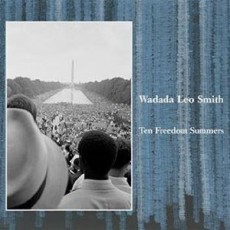
Daily Dose Of Jazz…
Leo Smith was born Ishmael Wadada Leo Smith on December 18, 1941 in Leland, Mississippi. He started out playing drums, mellophone and French horn before he settled on the trumpet. He played in various R&B groups and by 1967 became a member of the AACM and co-founded the Creative Construction Company, a trio with Leroy Jenkins and Anthony Braxton. In 1971 he formed his own label, Kabell, formed another band, the New Dalta Ahkri, with members including Henry Threadgill, Anthony Davis and Oliver Lake.
In the Seventies, Smith studied ethnomusicology at Wesleyan University and spent this time playing again with Anthony Braxton and recording with Derek Bailey’s Company. In the mid-1980s, Smith became Rastafarian and began using the name Wadada. In 1993, he began teaching at Cal Arts, a position he presently holds and has taught instrument making.
By 1998, Leo and guitarist Henry Kaiser released Yo, Miles! a tribute to Miles Davis’s lesser-known electric period. He has performed and/or recorded with Jack DeJohnette, Malachi Favors, John Zorn, Marion Brown, Frank Lowe and Matthew Shipp among others. In addition to playing the trumpet and flugelhorn, he plays several world music instruments, including the koto, kalimba and the ateneben.
More Posts: flugelhorn,trumpet
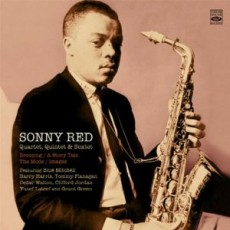
Daily Dose Of Jazz…
Sonny Red was born Sylvester Kyner Jr. on December 17, 1932 in Detroit, Michigan. He learned a lot in the shadow of hard bopper Charlie Parker but went on to develop his own voice and style.
He started professionally in the 1940s playing with Detroit pianist Barry Harris. By the mid-Fifties he was playing tenor with both the trombonist Frank Rosolino, and Art Blakey. Three years later he performing and recording in New York with the trombonist Curtis Fuller.
A fluent soloist, Sonny found success as a sideman and in the late 1950s and early Sixties his reputation increased leading albums for the Blue Note and Jazzland labels. With Barry Harris and Cedar Walton splitting piano duties on the “The Mode” and Harris solely on “Images” these two albums showcased his talent and established his voice. He would go on to work as a sideman with Clifford Jordan, Donald Byrd, Bill Hardman, Paul Quinichette, Bobby Timmons, Frank West and others.
The fortunes of jazz diminishing and changes in the music offered limited opportunities for him to record a slim discography and unfortunately gained him a modest reputation. Sonny Red fell into obscurity in the Seventies and he died in his hometown on March 20, 1981 at 49 years old.
More Posts: saxophone
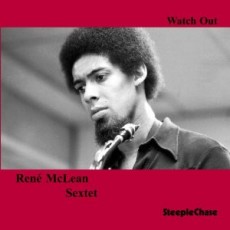
Daily Dose Of Jazz…
René McLean was born on December 16, 1946 in New York City, the son of altoist Jackie McLean. He started playing guitar before receiving his alto saxophone and instruction from his father at age nine. He made his debut with his father’s band in the mid Sixties as well as leading his own bands. His debut as a bandleader and producer began at the age of 16 in 1963.
He later studied music with the Jazz Arts Society, Haryou Act Cultural Program, and the Jazz Mobile, New York College of Music, the University of Massachusetts at Amherst and privately with George Coleman, Sonny Rollins, Frank Foster, Kenny Dorham and Barry Harris among others. By the mid -1970’s McLean played in a quintet with Woody Shaw and Louis Hayes and toured with Hugh Masekela in 1978.
René has performed and recorded extensively as a leader and featured sideman with the Dizzy Gillespie Big Band, Lionel Hampton All Stars, Tito Puente Orchestra, Horace Silver, Dr. Bill Taylor, Hugh Masekela, Miriam Makeba, Abbey Lincoln, Dexter Gordon, James Moody, Yusef Lateef, Jaco Pastorius and Jerry Gonzales’ Forte Apache Band, as well as collaborating with poet-activist Amiri Baraka.
As a music educator McLean has performed, conducted workshops and lectured at numerous universities and cultural programs in the U.S. and Caribbean (including Cuba), as well as in South America, Europe, Lebanon, Japan, Indonesia, South Africa, Lesotho, Botswana, Swaziland, Namibia, Mozambique, Zimbabwe, Madagascar and Mauritius and is presently Professor of African American music of the Jackie McLean Institute at The Hartt School, University of Hartford and Master Artist-in-Residence of Music at the Artists Collective in Hartford, Connecticut.
More Posts: saxophone
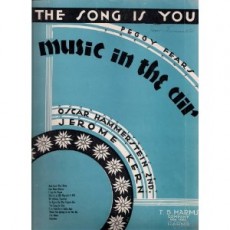
From Broadway To 52nd Street
On November 8, 1930 at the Alvin Theatre, the curtain rose for Music In The Air starring Walter Slezak, Natalie Hall, Tullio Carminetti and Katherine Carrington. Running for 342 performances and the tune, The Song Is You was written and composed by Jerome Kern and Oscar Hammerstein becomes a jazz classic standard.
The Story: We follow Karl who writes a song and along with his Bavarian villages trek to Munich to have it published. In Munich, Karl is pursued by a flirtatious prima donna, while composer Bruno falls in love with Karl’s sweetheart. Her indifference to Bruno only lends to fuel Bruno’s ardor and he confesses to her that no matter what melody he creates, it’s always her. The romance and high hopes prove fruitless, so all return home together.
Jazz History: Art Tatum was to become one of The Street’s brightest stars and legendary giants with a following that brought him the highest paid salary to any performer. He moved between The Onyx, The Three Deuces and The Downbeat and was always in great demand for private parties and was once paid a hundred dollars at a George Gershwin shindig to perform during his sixty-minute intermission at the club. With his vision limited to 25% in one eye, he would often ask a friend to walk him down to Hanson’s Drugstore at 51st and 7th, New York’s equivalent to Schwab’s in Hollywood, where it became a gathering place of theatre-goers, celebrities and hopefuls and where Walter Winchell regularly stopped by. Tatum always took a seat at the L-shaped counter and when it was full he would ask someone to drop a handful of coins on the counter and impress the onlookers with his acuteness of hearing by identifying each coin. Art Tatum lived, drank and died with the prodigality that characterized his keyboard pyrotechnics. Frequently he stayed up for days at a time with only catnaps to sustain him or slept long stretches only to awake instantly the moment his hand was touched. Of the 46 pianists queried after his death, 30 named him as their favorite pianist.
Sponsored By
www.whatissuitetabu.com
More Posts: broadway
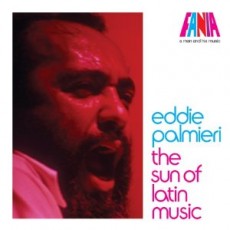
Daily Dose Of Jazz…
Eddie Palmieri was born of Puerto Rican parentage on December 15, 1936 in Bronx, New York and when he was only 8 years old, he would musically accompany his older brother Charlie and together they entered and participated in many talent contests
Palmieri continued his education in the city’s public school system where he was constantly exposed to music, specifically jazz. He took piano lessons and performed at Carnegie Hall when he was 11 years old. Influenced by Thelonious Monk and McCoy Tyner and inspired by his brother he formed his own band in 1950 at age 14.
In 1961, Palmieri formed the band Conjunto La Perfecta, featuring legendary singer Ismael Quintana and replaced the traditional violins with trombones to create a more robust sound by including a touch of jazz in his recordings and incorporating a popular Cuban rhythm known as Mozambique.
Eddie disbanded the band in 1968 but three years later was recording with his brother and in 1974 was the first Latin musician to win a Grammy Award for Best Latin Recording with The Sun of Latin Music. Through the Eighties he continued performing and recording, winning two Grammys for his Palo Pa Rumba and Solito albums.
In the 1990s Palmieri was part of various concerts and recordings with the Fania All-Stars and the Tico All-Stars; he introduced La India with the production of Llego La India via Eddie Palmieri released in 1992. In 2000, Palmieri announced his retirement from the world of music. He recorded Masterpiece with Tito Puente, won 2 Grammys and was also named the “Outstanding Producer of the Year” by the National Foundation of Popular Culture. Palmieri has won a total of 9 Grammy Awards in his career, most recently for his 2006 album with Brian Lynch – Simpatico.
Palmieri teamed up with longtime trumpeter and band member Brian Lynch, has worked with Phil Woods, Lila Downs, Donald Harrison, Conrad Herwig, Gregory Tardy, Edsel Gomez and Rubén Rodríguez among others. With more than three-dozen albums to his credit he continues to perform and tour.
More Posts: piano






